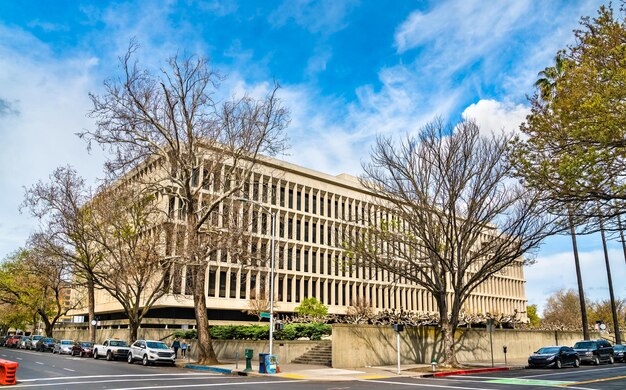What Happens After the Election? A Guide to the 2025 Transition of Power

What Happens After the Election? A Guide to the Transition of Power in 2025 details the procedures and events that follow a US presidential election, ensuring a smooth transfer of authority from the outgoing to the incoming administration, covering everything from the certification of results to Inauguration Day.
The US presidential election marks the beginning, not the end, of a critical process. What Happens After the Election? A Guide to the Transition of Power in 2025 is designed to explain what happens immediately after the votes are cast.
Understanding the Election Results and Certification
After Election Day, the focus shifts to counting and certifying the votes. This process ensures that every vote is accurately tallied and that the election results are verified before the transition of power can officially begin.
The vote-counting process can sometimes extend to several days or weeks, especially in close elections. Provisional ballots, absentee ballots, and potential recounts all contribute to the timeline. Here’s a breakdown of what to expect.
The Initial Vote Count
The initial vote count begins almost immediately after the polls close on Election Day. Election officials at the local level tally the votes from each precinct. This process is usually transparent, with representatives from both major parties present to observe.
Certification at the State Level
Once the local counts are complete, the results are sent to the state level for official certification. This involves audits and reviews to ensure accuracy. State deadlines for certification must be met to proceed with the electoral process.
- Provisional Ballots: These are ballots cast by voters whose eligibility is questioned. They are counted after verification.
- Absentee Ballots: Absentee ballots, often mailed in, are counted after Election Day, following specific state procedures.
- Recounts: Close elections often trigger automatic or requested recounts to double-check the results.
The accurate and transparent vote-counting process is the foundation for a reliable transfer of power. Any disputes or irregularities can lead to legal challenges that may extend the timeline. The importance of thorough verification cannot be overstated.

Following the announcement and certification of the results, the focus shifts to the outgoing administration and the incoming one as they prepare for the transition of presidential power.
The Role of the Outgoing Administration
The outgoing administration plays a vital role in ensuring a smooth transition of power. They are responsible for briefing the incoming team on key policy issues, budgetary matters, and ongoing projects. Their cooperation is essential for maintaining stability and continuity in government.
The outgoing administration’s main goal is to facilitate a seamless handover. This involves preparing transition documents, offering advice, and ensuring that the incoming team has all the necessary resources and information.
Briefing the Incoming Team
One of the most critical tasks is briefing the incoming administration’s team. These briefings cover a wide range of topics, including national security, economic policy, and domestic issues.
Preparing Transition Documents
The outgoing administration must prepare detailed transition documents for the incoming team. These documents provide a comprehensive overview of the current state of affairs and any pending issues.
- Policy Issues: Detailed reports on key policy initiatives and challenges.
- Budgetary Matters: An overview of the budget, including current expenditures and future projections.
- Ongoing Projects: Information on ongoing projects and their status.
The outgoing administration sets the stage for the new president to take office without significant disruptions. A successful handover depends on their willingness to cooperate and provide the necessary support.
With the outgoing administration’s preparations underway, the focus shifts to the President-elect and their transition team, who must quickly assemble a cabinet, define their policy priorities and prepare for the new term.
The President-Elect and the Transition Team
Once a president-elect is declared, they immediately begin forming their administration. This involves selecting cabinet members, appointing key advisors, and defining their policy priorities. The transition team plays a crucial role in preparing for the new term.
The transition team helps the president-elect navigate the complexities of taking office. This team works to ensure that the new administration is ready to govern from day one.
Selecting Cabinet Members
One of the first tasks of the president-elect is to nominate individuals to serve in their cabinet. These nominations must be confirmed by the Senate.
Defining Policy Priorities
The president-elect also works to define their policy priorities. This involves outlining their legislative agenda and setting the tone for their administration.
- Cabinet Nominations: Selecting individuals to lead key government departments.
- Legislative Agenda: Identifying the top policy goals for the first 100 days.
- Transition Team: Assembling a team of experts to assist with the transition process.
By carefully selecting their team and defining their policy priorities, the president-elect lays the groundwork for a successful term. The transition process is a crucial period for shaping the new administration.
The President-elect’s team requires office space, resources and key staff members as they prepare for office. The General Services Administration (GSA) plays a central role in aiding this critical operation.
The Role of the General Services Administration (GSA)
The General Services Administration (GSA) plays a critical role in supporting the presidential transition. The GSA provides office space, funding, and logistical support to the president-elect and their transition team. This ensures that the new administration has the resources they need to prepare for office.
The GSA’s assistance is vital for a smooth and efficient transition. They help the incoming administration get organized and ready to govern.
Providing Office Space
The GSA provides office space for the president-elect and their transition team. This space is typically located in or near Washington, D.C.
Offering Funding and Support
The GSA also provides funding and logistical support, including IT services, security, and transportation.

- Office Space: Ensuring adequate space for the transition team.
- Funding: Providing financial resources for transition activities.
- Logistical Support: Offering IT, security, and transportation services.
The GSA’s support is essential for ensuring that the new administration can hit the ground running. Their assistance helps streamline the transition process and minimizes disruptions.
The peaceful transfer of power is a hallmark of American democracy. Legal challenges can arise in elections, and must be resolved swiftly and fairly.
Addressing Legal Challenges and Disputes
Legal challenges and disputes are a common part of the US election process. These challenges can arise from various issues, including vote counting, ballot eligibility, and election procedures. The resolution of these challenges is crucial for ensuring the legitimacy of the election results.
Legal challenges can sometimes delay the transition process, but they are a necessary part of ensuring a fair election.
Common Types of Legal Challenges
Legal challenges can take many forms, including recounts, audits, and lawsuits.
The Role of the Courts
The courts play a critical role in resolving election disputes. They must review the evidence and make impartial decisions based on the law.
- Recounts: Reviewing the vote count to ensure accuracy.
- Audits: Examining election procedures to identify any irregularities.
- Lawsuits: Addressing legal claims related to the election process.
The resolution of legal challenges is a crucial step in the transition process. A fair and transparent legal process helps ensure that the election results are accepted by all parties.
Culminating all the preparation and procedure, Inauguration Day stands as a key event as the incumbent President finishes his term and the new President starts.
Inauguration Day: The Formal Transfer of Power
Inauguration Day marks the formal transfer of power from the outgoing president to the incoming one. On this day, the president-elect takes the oath of office and delivers their inaugural address, setting the tone for their administration.
Inauguration Day is a symbolic event that celebrates the peaceful transfer of power. It is a day of tradition and ceremony, marking the beginning of a new chapter in American history.
Taking the Oath of Office
The president-elect takes the oath of office, typically administered by the Chief Justice of the Supreme Court. This is a formal declaration to uphold the Constitution.
Delivering the Inaugural Address
The inaugural address is a speech delivered by the new president, outlining their vision for the country and their policy priorities.
- Oath of Office: A formal declaration to uphold the Constitution.
- Inaugural Address: A speech outlining the new president’s vision and priorities.
- Transfer of Power: The formal handover of authority from the outgoing to the incoming administration.
Inauguration Day represents the culmination of the transition process, symbolizing the continuity of government and the peaceful transfer of power.
“`html
| Key Element | Brief Description |
|---|---|
| 🗳️ Vote Certification | Ensures accurate vote count and verifies election results before the transition. |
| 🤝 Outgoing Admin | Briefs incoming team on policy, budget, and projects for continuity in governance. |
| 💼 President-Elect Team | Selects cabinet, defines policies, and prepares for the new term. |
| 🏛️ Inauguration Day | Marks the formal oath of office and transfer of power, symbolizing a start of a new administration. |
“`
Frequently Asked Questions
▼
After Election Day, the focus shifts to counting the votes. Election officials begin the process of tallying the votes from each precinct. This process can take several days or even weeks, particularly in close elections that may require recounts.
▼
The outgoing administration has numerous obligations during to the transition. These include briefing the incoming administration, preparing transition documents, and overall facilitating the handover, ensuring the new president takes office with minimal delays.
▼
The General Services Administration (GSA) provides assistance during the transition. This includes providing office space, funding, logistical support such as IT services, security measures and transportation to the incoming administration, making the transition as organised as possible.
▼
Inauguration Day marks the beginning of a new chapter in American history, and symbolises the peaceful tradition of transfer of power.
▼
Legal challenges are common during election processes. Disputes are usually resolved through recounts, audits, and lawsuits as required. The courts play a vital role in reviewing evidence and making decisions based on state and federal law.
Conclusion
Understanding what happens after an election is crucial for maintaining faith in the democratic process. The period between Election Day and Inauguration Day is a carefully orchestrated series of events designed to ensure a smooth and peaceful transition of power. By understanding this process, citizens can better appreciate the complexities of American democracy and the importance of each step in the transfer of presidential authority.
Read more content
